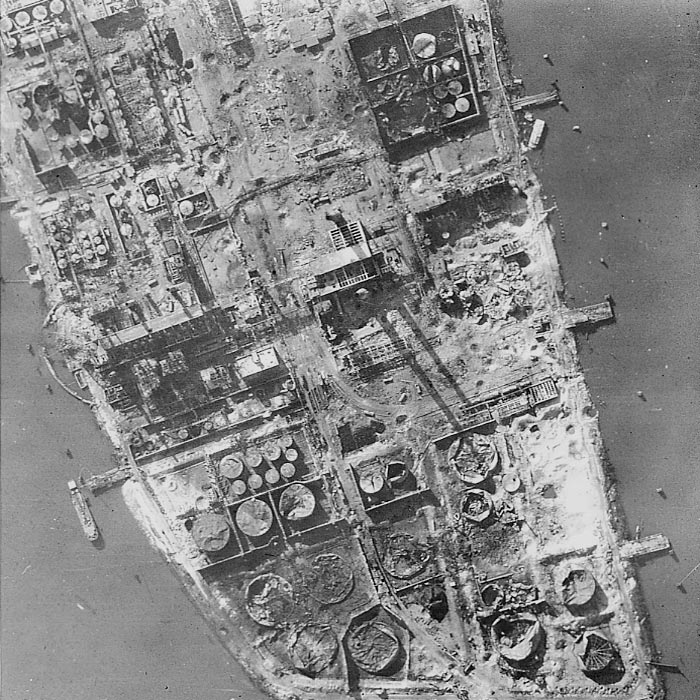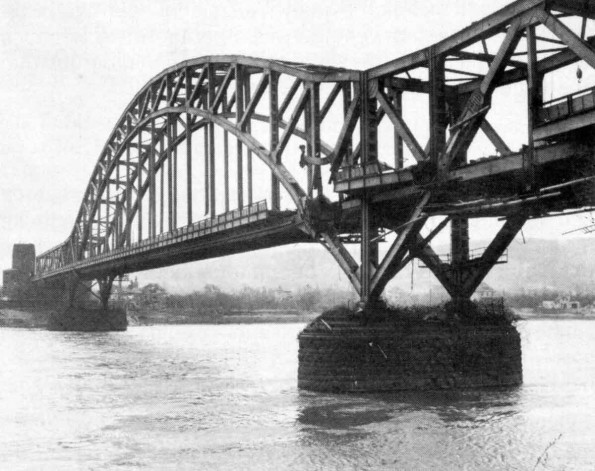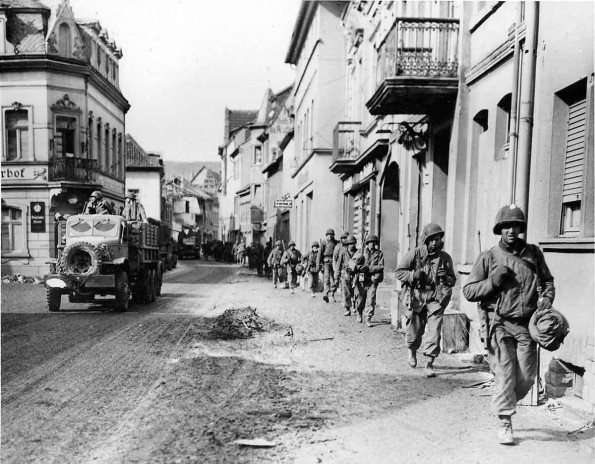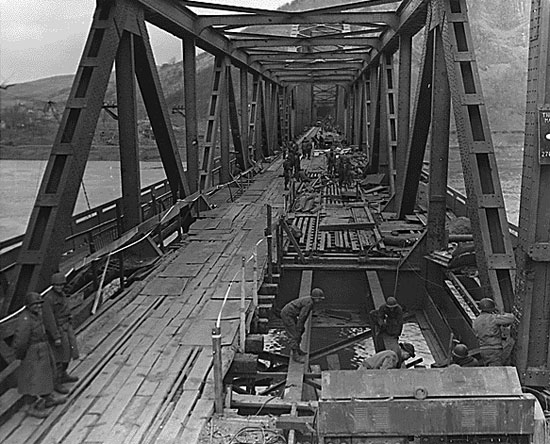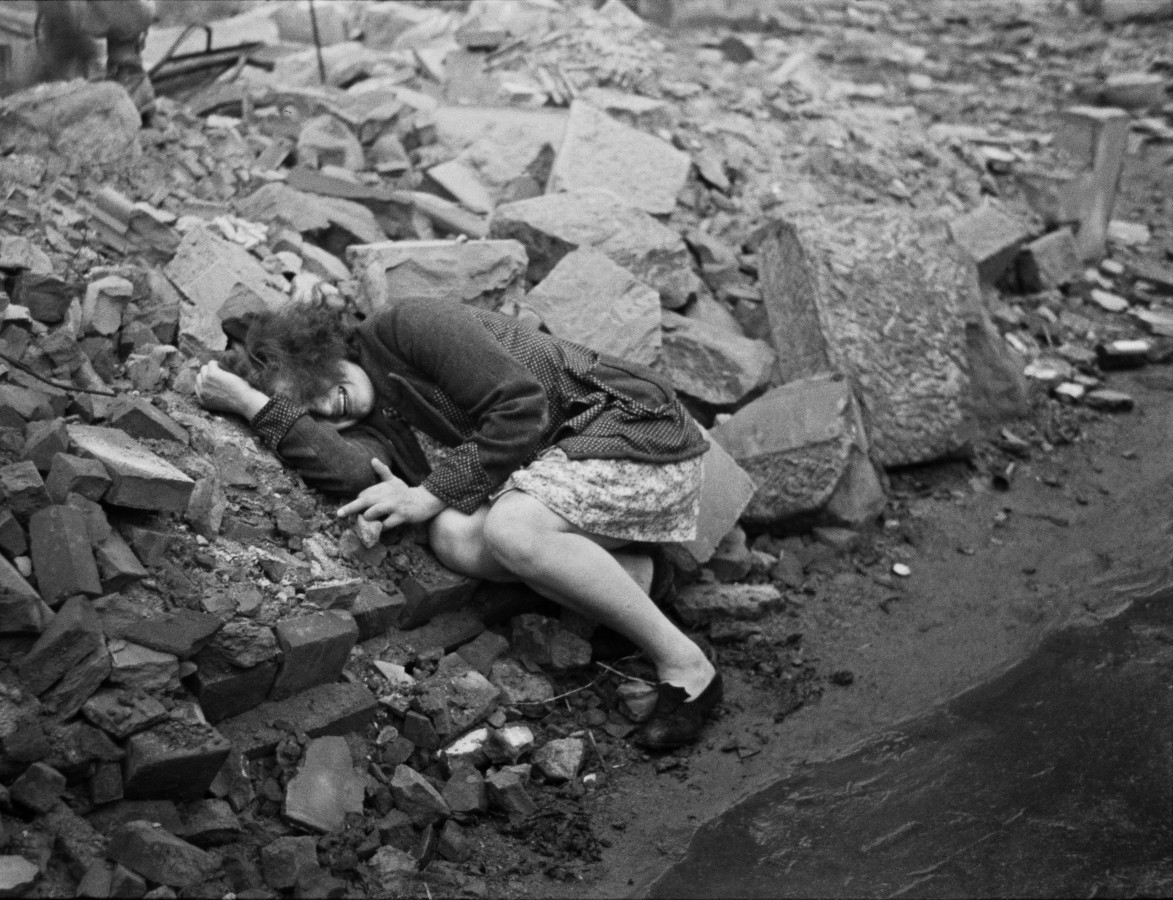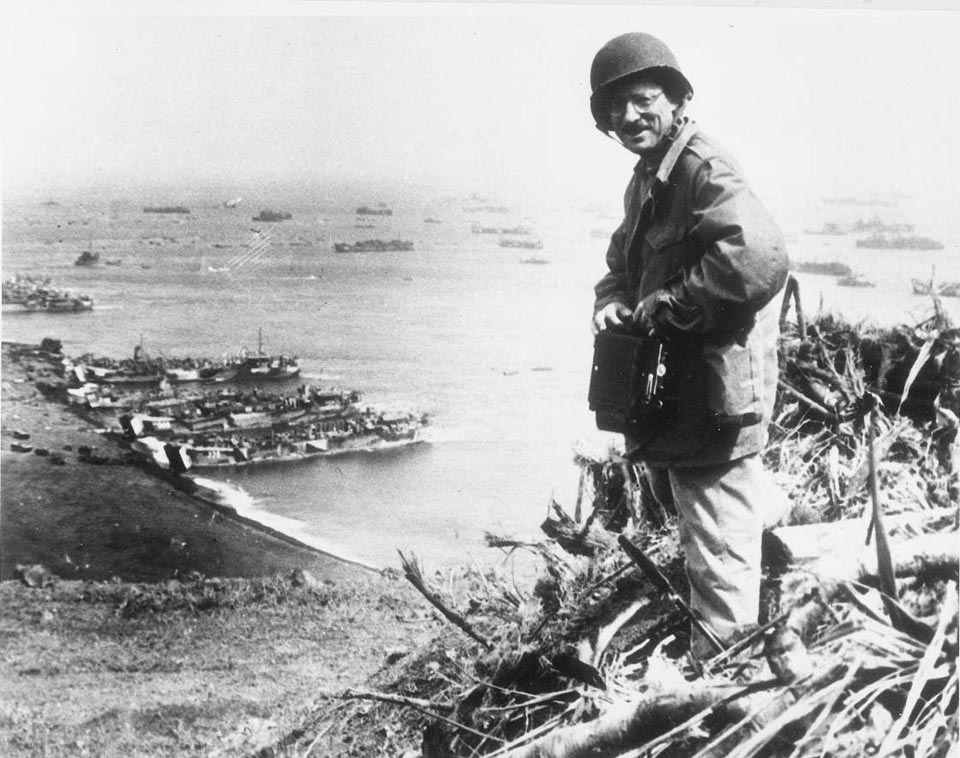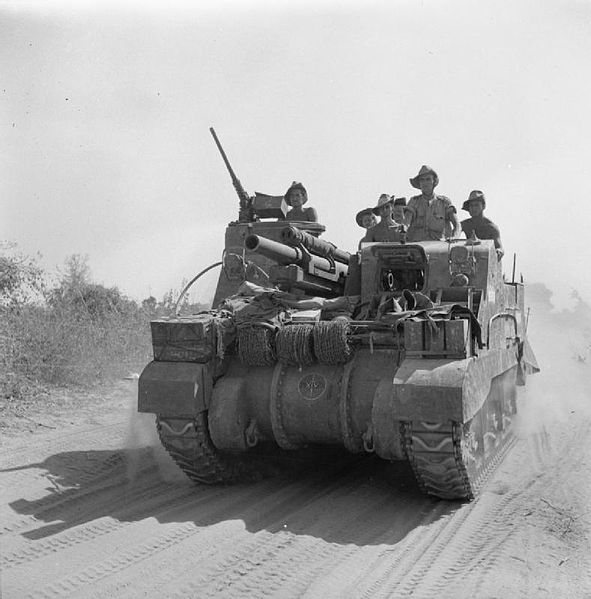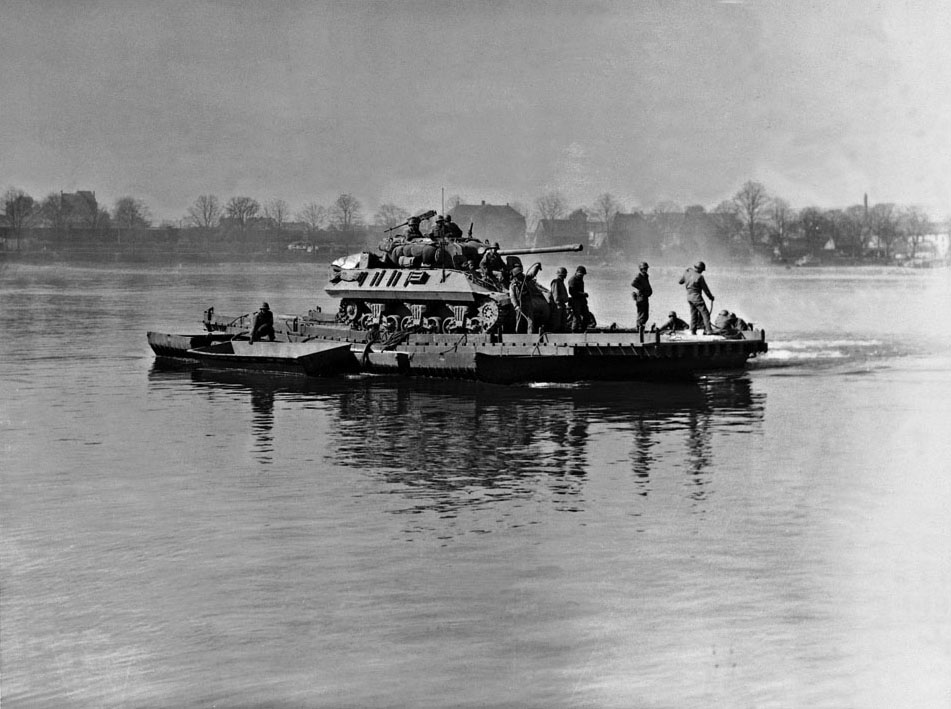Air Operations, CBI
BURMA- 12 10th Air Force B-25s and 35 fighter-bombers attack numerous targets in and directy behind the Japanese Army.
- 30 P-47s support British 14th Army ground forces near Mogok.
- 18 P-47s support Chinese Army ground forces near Mansam.
- 4 341st Medium Bomb Group B-25s and 9 14th Air Force P-40s attack rail targets near Kiaotow.
- More than 130 fighter-bombers attack rail, road, river, and other targets of opportunity across southern and eastern China.
- 51st and 3rd CACW Fighter group P-51s down 1 Ki-43 'Oscar' fighter and 3 Ki-44 'Tojo' fighters over the airfield at Taichaiochan between 1455 and 1525 hours.
Air Operations, Europe
RAF BOMBER COMMANDEvening Ops:
- 526 Lancasters and 5 Mosquitos of Nos. 1, 3, 6 and 8 Groups raid Dessau. This is another devastating raid on a new target in eastern Germany with the usual town center, residential, industrial and railway areas all being hit.
- 18 Lancasters are lost.
- 256 Halifaxes and 25 Lancasters of Nos. 4, 6 and 8 Groups attempt to attack the Deutsche Erdoel refinery at Hemmingstedt, near Heide, with little success.
- 4 Halifaxes and 1 Lancaster are lost.
- 234 Lancasters and 7 Mosquitos of No. 5 Group carry out an accurate attack on the oil refinery at Harburg. One local report states that a rubber factory was seriously damaged as well as the oil targets.
- 14 Lancasters are lost. No. 189 Squadron, from Fulbeck, loses 4 of its 16 Lancasters on the raid.
- 80 Mosquitos are sent to Berlina, 10 to Frankfurt, 9 to Münster and 5 to Hannover, 15 Halifaxes and 5 Lancasters lay mines off Eckemforde and Flensburg, and there are 43 Mosquito patorls, and 56 RCM sorties.
- 1 Mosquito is lost on the Berlin raid, and 2 Halifaxes and 1 Fortress of No. 100 Group are also lost.
GERMANY:
- 86 1st Air Division B-17s attack two synthetic-oil plants at Dortmund.
- 211 1st Air Division B-17s attack marshalling yards at three locations (secondaries).
- 80 2nd Air Division B-24s attack a water viaduct at Schildesche.
- 144 2nd Air Division B-24s attack a marshalling yard at Soest.
- 173 3rd Air Division B-17s attack two synthetic-oil plants at Datteln.
- 77 3rd Air Division B-17s attack a synthetic-oil plant at Castrop.
- 71 3rd Air Division B-17s attack marshalling yards at two locations (secondaries).
- 1 of 274 VIII Fighter Command escorts is lost.
GERMANY:
- Elements of the US 1st Army capture the Ludendorff rail bridge, which spans the Rhine River at Remagen. Immediately, as US ground forces rush to protect the bridge and expand the bridgehead, the Luftwaffe mounts a steady stream of missions against the span itself--and IX TAC launches a virtually impermeable aerial umbrella to defend the bridge.
ITALY:
- 12th Air Force B-25s attack rail and other communications targets.
- XXII TAC P-47s attack dumps and communications targets in the Po River valley.
- During the night, XXII TAC A-20s and A-26s attack Po River crossings at six locations, light sources, road traffic, and signs of movement in the Po River valley.
Air Operations, Philippines
- XIII Bomber Command B-24s, 42nd Medium Bomb Group B-25s, and 347th Fighter Group P-38s attack targets in the Zamboanga area.
- V Bomber Command B-24s and A-20s, and V Fighter Command fighter-bombers attack numerous targets across the Luzon area.
- Many fighter-bombers support US 6th Army and Filipino guerrilla ground forces on Luzon.
Air Operations, Volcano Islands
Task Group 52.2 TBMs and FMs mount their final missions in support of US V Marine Amphibious Corps ground forces on Iwo Jima.
[Battle of the Atlantic
U-1302 had been operating St George's Channel with some success having sunk the US freighter Soreldoc (1926t) and the British freighter Norfolk Coast on February 28. On March 2 she sinks the British ship King Edgar (4536t) and the Norwegian freighter Novasli (3204t). Escort groups begin looking for her. On the night of March 7 the Canadian frigate La Hulloise picks up a suspicious radar contact followed by an asdic contact which classified it as 'submarine'. Depth charge and Hedgehog attacks are made by La Hulloise and Canadian frigates Strathadam and Thetford Mines which resulted in the sinking of U-1302.
| Class | Type VIIC/41 |
| CO | Kapitänleutnant Wolfgang Herwartz |
| Location | Irish Sea, Cardigan Bay |
| Cause | Depth charge |
| Casualties | 49 |
| Survivors | None |
Burma
In the north, a regiment of the Chinese 38th Div occupies Lashio, northeast of Mandalay and on the 'Burma Road'.
In the British IV Corps sector, the Japanese 7th Div launches a counter-offensive to recapture Meiktila, and succeed in cutting off much of the 17th Indian Div in Taungtha. The British threat to Mandalay, from Lashio in the northeast and Meiktila in the southwest, continues to grow. Lashio falls to the Chinese 37th Div.
[Eastern Front
In Hungary and Yugoslavia, along the line Lake Velencei-Balaton-Drava, Operation WALDTEUFEL goes ahead. Army Group E crosses the Drava in the area of Donji Miholjac and Valpovo, inflicting heavy losses on the Bulgarian 1st Army and Yugoslav 3rd Army, and heading for Mohacs. South of Lake Balaton, the 2nd Panzer Army breaks through the lines of the Russian 57th Army, 3rd Ukraine Front, making for Nagybajom. Between Lake Balaton and Lake Velencei, the Russian 27th Army contains the advance of the 6th SS Panzer Army.
In Poland evacuations begin from around Danzig. These last until the middle of April.
HUNGARYThe II SS Panzer Corps joins the attack, hitting the Soviet 26th Army north of Lake Balaton, although the Soviets manage to hold the panzers. The German 2nd Panzer Army and Army Group E join the offensive, the former making some gains against the 57th Army, but Army Group E is largely contained on the Drava.
SOUTHERN SECTORThe fighting north of Lake Balaton intensifies as leading elements of the II SS Panzer Corps attacks between the I SS to its south and III Panzer to the north. The 26th Army is hit by upwards of 170 panzers and assault guns but fights doggedly in the waterlogged ground, holding up the German spearheads long enough for Tolbukhin to reinforce the battered army with his remaining reserves. To the south the 2nd Panzer Army and Army Group E join the offensive, the 2nd Panzer managing to penetrate the 57th Army's forward positions after hard fighting. Along the Drava Army Group E also attack but only manage to establish small bridgeheads on the north bank in the face of determined resistance by the 1st Bulgarian and 3rd Yugoslav Armies near Donji Miholjac and Valprovo.
[Italy
The Jewish brigade enters action crossing the Montone River in its first encounter.
[Iwo Jima
Taking the Japanese by surprise by attacking without the usual artillery preparation, a regimental combat group of the 3rd Marine Div captures Height 362 E on the Motoyama plateau. The 5th Marine Div, attacking on the left of the line, makes limited progress, slowed by the broken nature of the terrain. Supporting fire from ships has to be cut to the minimum because the 2 sides are so close to one another, something which has already caused several incidents, with losses among the Marines.
[Philippines
On Luzon in the I Corps sector, a battalion of the 127th Inf Regt occupies the bridge and village of Aringay and advances toward Mount Magagang. Another battalion of the same regiment is held up by strong Japanese resistance on the Villa Verde track.
The XIV Corps begins operations against the Shimbu line, the 158th Inf occupy Taal, which is undefended, and advance rapidly in the area of Lake Taal.
[Western Front
In the Canadian II Corps, 1st Army, sector, preparations go on for the final attack on Xanten. Apart from some limited activity by the XVI Corps to extend its north flank toward Wesel, the US 9th Army front remains quiet. Cologne, Germany's third city, is captured by the US 3rd Arm Div and the 104th Div, VII Corps, US 1st Army. While some units of the 9th Arm Div, III Corps, succeed in establishing bridgeheads across the Ahr and Rhine Rivers, others at Remagen manage to seize the Ludendorff Bridge across the Rhine, the only one that the German have not been able to blow up, establishing a small bridgehead on the east bank. Troops are immediately rushed across and brilliant staff improvisation sends more units hurrying to join them. Hitler is furious and sacks Field Marshal von Rundstedt from command of the German armies in the west.
In the US 3rd Army sector, while the 87th Div, VIII Corps, advances swiftly to the northeast toward the Ahr River and the units of the 11th Arm Div take Dockweiler, Boxberg and Kelberg, the 4th Arm Div, XII Corps, proceeds along the Ulmen-Kaisersech-Kehrig-Ochtendung axis, south of Andernach. In little more than 2 days the American division has advanced 45 miles, taking some 5,000 prisoners, capturing huge amounts of equipment and sowing disorder among the units of the German 7th Army, dispersed north of the Moselle and west of the Rhine.
[Yugoslavia, Politics
The two existing governments, Tito's and the royalist government, are merged into a new single government dominated by Tito and his followers. This is a temporary measure, as Tito intends to retain full control of the government for the Communist Party, which he believes the population will accept without question as a result of partisan successes during the war.
[Images from March 7, 1945
|
|
|
|
|
|
|
|
Examining a Damaged German 75-mm Self-propelled Gun |
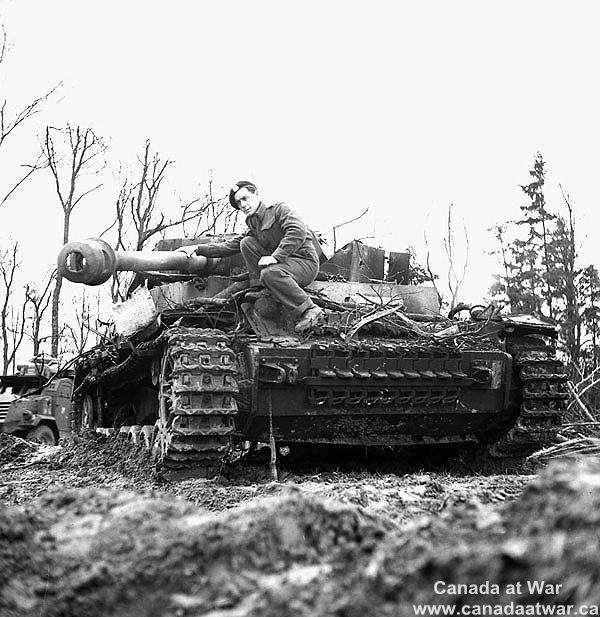 |
